1967 Vauxhall Cresta 3.3 Automatic PC
Many manufacturers included an ultra-basic model in their line-up to offer a low entry point. Often this was available more in theory than in fact, but as Andrew Roberts discovers, in the case of the Vauxhall Cresta PC, the most basic of models was still a fine motor car.
PICTURES: MATT RICHARDSON
THE POOR RELATION? Vauxhall PC Cresta
The ‘Standard’ model was the base spec offering. Survivors are few and far between
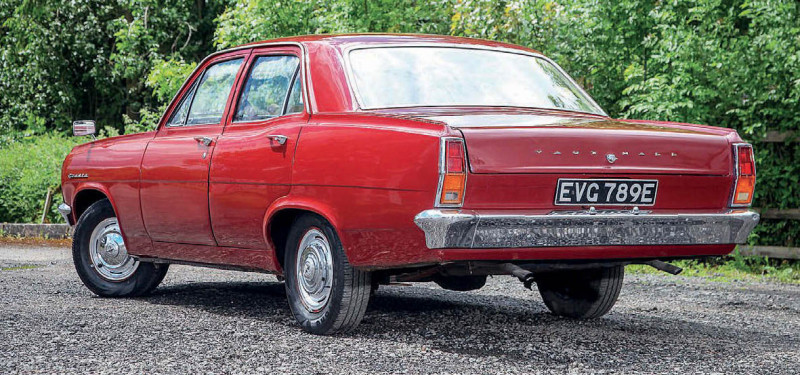
Some versions of popular models are more frequently seen in brochures than on the road. The Sunbeam-badged Vogue Arrow is one such vehicle, as is the two-door Ford Corsair and the Cresta PC Standard. For many years I regarded the single-headlamp big Vauxhall as almost mythical, a car we only saw in the terrible 1970 B-film Incense for the Damned. However, in 2022 I finally encountered Neil Haymer's 1967 example, which has to be one of the rarest cars towear the Griffin logo.
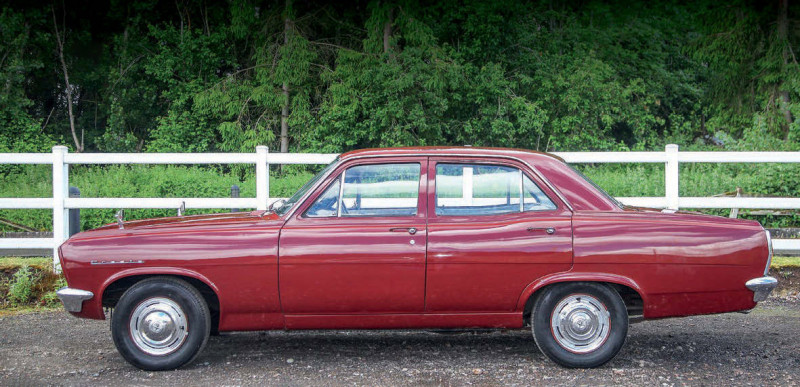
As we described in our Marques and Models series in the September 2022 issue, the PC represented the fourth and last generation of Vauxhall's post-war large saloons. It made its bow at the 1965 Earls Court Motor Show, where one talking point was that Luton had dispensed with the long-established Velox name in favour of Cresta Standard for the cheapest model. Another was the PC's appearance as the Coke bottle look inspired by the 1964 Chevrolet Impala was a first for the marque, and indeed any British car. So naturally, the team on the Vauxhall stand happily informed visitors of the wonders of the PC’s bodywork, which offered more shoulder room than its PB predecessor. Equally importantly, the latest Cresta made the rival Ford Zephyr/ Zodiac Mk3 look dated.
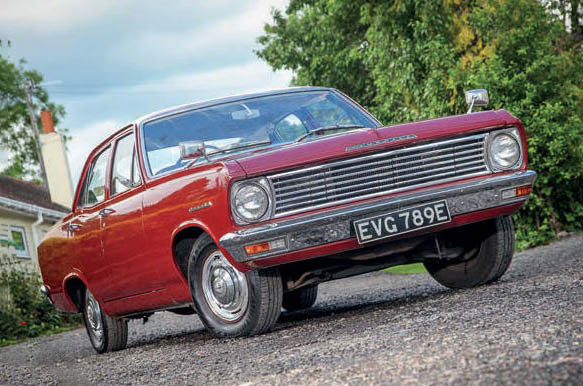
In short, the Vauxhall with the 'Dynamic Personality' represented 'the best of modern motoring.' For just £956 2s 11d you gained an imposing motor car with 'Space Curve' styling, whatever that was. More practically, the cabin had room for six, while almost any number of cases would fit in a boot that offered 30 cubic feet of space – almost double the capacity of the Velox/Cresta PB. As for equipment, the brochure was somewhat wide of the mark when it promised 'the soft caress of deep luxury' – with the early PC Standard models, a heater cost another £16 10s and Screenclean windscreen washers were an additional£2 19s 6d. The first owner of EVG 789E spent a further £3 15s for a pair of wing mirrors, although they resisted the temptation to invest £1 7s in reversing lamps. At least the neighbours were probably more than impressed by map pockets in the front doors. When marketing a bottom-of- the-range model, some manufacturers down played its very existence, not even featuring pictures of it in their sales material. In contrast, others did their utmost to highlight their limited array of fittings. 1965 saw Luton opting for the latter approach, and the Standard featured prominently in the early PC brochures. This was a logical sales tactic because Vauxhall intended it as the model for business fleet buyers and police forces. Nor should it be forgotten that neither of the Cresta's principal competitors was exactly renowned for the abundance of their appointments – the Austin A110 Westminster Mk2 'Standard' even lacked a passenger sun visor, and when Ford unveiled the Zephyr- Zodiac Mk4 in early 1966, the entry-level models were as utilitarian as a British Rail waiting room.
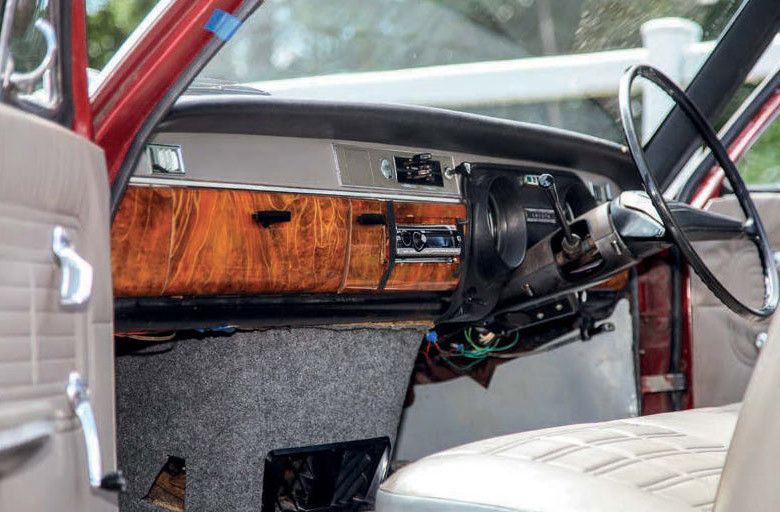
The Cresta's significant advantage over BMC and Ford was the 3.3-litre straight-six married to a three-on-the-column all-synchromesh gearchange; a four-on-the-floor cost another £14 10s.
Vauxhall introduced this unit in late 1964 on the PB series, and many owners remarked on its smoothness. Some drivers found the engine to be so flexible that second gear could be employed in urban motoring at 10mph and A-road cruising at 60mph alike. As for the PC's competitors, power for the Austin was from the 2912cc BMC C-series unit, but the Westminster’s image harked back to the previous decade.
The Zephyr 6 featured a 2.5-litre V6, Ford reserving the 3-litre Essex plant for the exalted heights of the Zodiac. However, as the 1960s progressed, the PC Standard did not live up to Vauxhall'ssales expectations. The lack of popularity was through no fault of the PC, which Motor regarded as well-suited to the motorist who wanted to complete long journeys quickly and in style. Autocar considered it 'a winner in the family car class,' and even Car magazine found the Cresta to be a 'good, honest, safe car.' Yet, it was notable that the test vehicles were De Luxes. The flagship Viscount, introduced in 1966, featured equally strongly in the motoring press, but there seemed no major features written about the Standard.
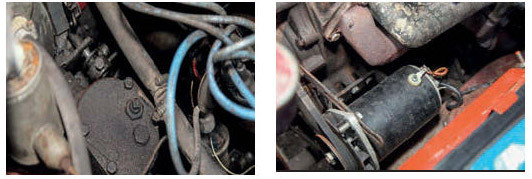
A further problem was the reasonable sum of £112 more for a higher model gained the buyer deep pile carpets, front central armrest, reversing lights, a cigar lighter and a glove box lock. The De Luxe also boasted those all-important quad headlamps that denoted transport for the up-and-coming executive. By contrast, the Standard was so Spartan that it lacked even a vanity mirror.
Production of the PC ended in 1972, and its belated heir, the 1978 Royale, was a completely different form of large car – an Opel-derived trans-European express.
Meanwhile, the 1973 fuel crisis resulted in the demise of many Crestas, as did the nation's banger racing circuits and the ravages of corrosion. Vauxhall boasted that the Magic Mirror acrylic paint finish needed only 'washing, rinsing and wiping to restore its original deep lustre,' but it could not repel corrosion. As a result, by the 1980s any PC was an unusual sight on British roads, while the Standard model was as rare as a viewable episode of Crossroads.
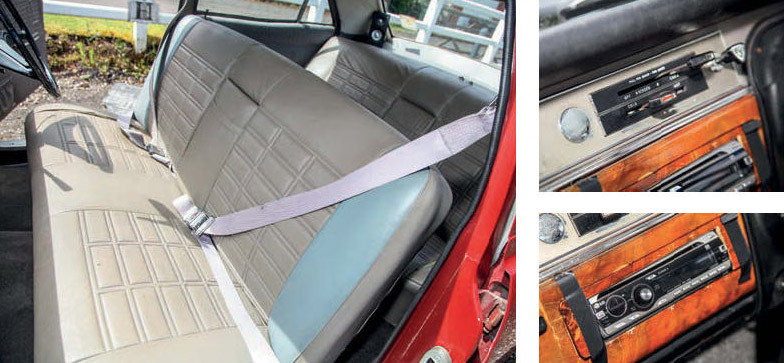
Today, there are possibly fewer than ten roadworthy Cresta Standards in the UKwhich makes EVG a vehicle of vast fascination. Neil bought the Vauxhall in early 2022 when it was in need of some refurbishment. He explains: 'It is my second Cresta PC, my first being a pale blue De Luxe. This one was bought in part exchange, and while mechanically the Cresta was generally in good condition, the gearbox was stuck in reverse. The Vauxhall had to go into a queue for repairs as my fleet then included 15 other cars. It then turned out that she needed a new linkage as all the holes had elongated, which resulted in a really sloppy change. I also reconditioned the carburettor,but that is more or less it in terms of initial repairs.'
When on the road, it is always important to recall that Vauxhall never promoted the Cresta as a sports saloon, for this was a trunk-road cruiser. Neil finds the Cresta to be very nice to drive, saying: 'It is softly sprung, the brakes are very good, and the three-speed gearbox is easy to use. I don't miss overdrive or a fourth ratio, and it is notable how well the Vauxhall pulls in third. The automatic choke works very well, and I like how the revs easily drop down.'

Despite the Cresta being a substantial machine, the original owner did not invest £60 8s 4d in power-assisted steering. Fortunately, Neil was surprised at how light the PC felt when he had returned it to the road. He thinks this is in part because the Cresta rides on crossplies rather than radial tyres. (Vauxhall's 'Motorway Tyres' were yet another extra at £3 6s 5d.) 'She is obviously a heavy car, but there really are no problems when driving her,' he asserts. Some Vauxhall owners complained that the PC wallowed, a trait exaggerated by the Standard's front bench.
Spending another £4 4s 7d on a central armrest helped to anchor the occupants in place, for otherwise the seatappears to offer no lateral support. However, Neil has no complaints about it and says that although he is a big chap, he finds it very comfortable. In terms of the challenges of PC ownership, one of the main problems is corrosion. Vauxhall promised its customers a strong integral body-chassis with seven-stage rustproofing, but the reality was somewhat different. As Neil observes: 'The ends of the sills are danger zones, and so is the bottom of the back wings. The tops of the front wings are also notorious for corroding, but luckily my Cresta was surprisingly good in that regard and was in need of just one small repair.' Another problem is, almost inevitably, parts availability. As Neil explains: 'As I understand it, the previous owner was an elderly gentleman who regularly used this car until it developed the transmission fault. He then had difficulty in finding the parts, which is why he eventually sold it. Replacement panels are another issue, and years ago I remember seeing many Vauxhalls with filled and repaired bodywork.'

Our photoshoot (which took place last year) marked the Cresta's first major outing since it joined Neil's fleet, and we were privileged to meet it again at the 2022 SilverstoneClassic. The PC was one of the guests of honour at a display of what may at first sound like an oxymoron – rare mass-produced cars. It would be fair to say it caused a minor stir. Many show goers bypassed an array of Ford GT40s and ignored other forms of exotica in favour of this far more exclusive Vauxhall. Several people appeared confused about its identity, some appearing to wonder whether it was a Holden, although its single-headlamp format made it look more like an Australian-built Ford Falcon. Meanwhile, a few younger show goers had obviously never before seen a car equipped with a three-on-the- column gear change.
The attention received by the Cresta is quite understandable, for it was an extremely imposing sight with the Calypso Red paintwork gleaming in the August sunshine. It is a vehicle of definite presence, so it was a surprise to realise the PC is slightly narrower than the PB. The Standard's lack of chrome decorations highlighted those distinctive Coke bottle lines which owed so much to the USA, while the cabin is best described as a riot of Vynide.
The dashboard sports a walnut veneer finish that appealed to British suburban sensibilities, with the Bakelite switches and the narrow air vents inducing instant nostalgia. You can easily imagine a 1960s motorist sitting behind the wheel, murmuring the words of the launch advertisement: 'If you want a car that's more spacious, powerful, handsome and luxurious, this one has it all.' With a car as impressive as the Vauxhall Cresta PC, the lack of a cigar lighter and such trinkets was of little consequence when even the Standard more than fulfilled Luton's promise of possessing 'a dignified radiator grille.'
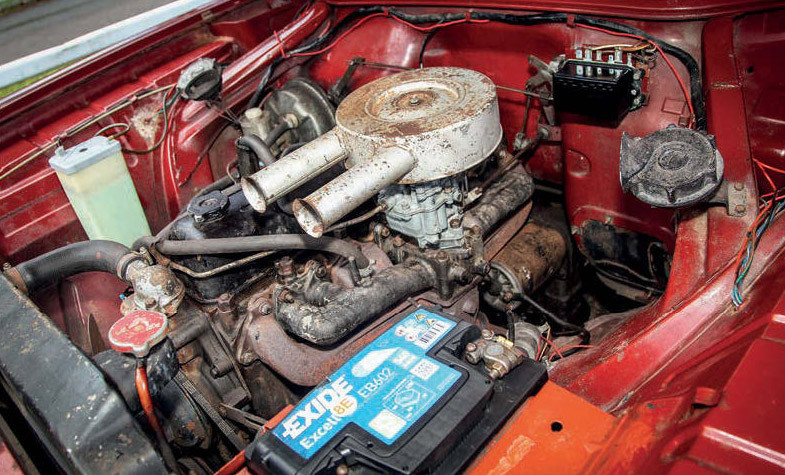
Best of all at Silverstone was the glorious moment when EVG took to the famous circuit. The sight of a Cresta on a track associated with Brabham, Clark, Hill, Moss and Stewart was quite surreal, but the Vauxhall proved as stately as a galleon as it negotiated the bends. In Neil's words: 'This was the PC's first major trip with me behind the wheel. I had previously driven around Silverstone, but that was in a Bentley, which was a slightly different experience! However, I was pleasantly surprised by just how comfortable and responsive the Vauxhall felt. Of course I took care to travel in a straight line as much as I could, for if I had hurled it into the corners, I would have been in real difficulty. A Cresta is not like a Mini on the tight turns, you must drive it carefully.' Above all, for many people of this writer's vintage (born the year of the Austin Maxi and Abbey Road), Neil's Vauxhall is a reminder of a lost form of motoring life.
Anglo-American six-seater saloons were already on the wane by the 1970s, but at that time you might still see an ageing Cresta De Luxe lurching along the A27 with three occupants on the front bench. Of course, when new, the likes of EVG would have represented an owner of some status in their firm with a company car that represented a definite step up from a Victor FC 101.
And to summarise the many virtues of the PC Cresta Standard, Neil's car is a striking-looking and utterly dependable big saloon with a faint but genuine air of mid-Atlantic glamour. Its true metier is as transport for a 1967-vintage commercial traveller, all Woodhue aftershave and fake-Canadian accent. You can imagine the Calypso Red Vauxhall sweeping up at the Blue Boar restaurant on the M1, its driver carefully checking his Luncheon Vouchers. After all, anyone with a PC company car, even if it has only two headlamps, must maintain their prestige.
The Standard's lack of chrome decorations highlighted those distinctive Coke bottle lines which owed so much to the USA


